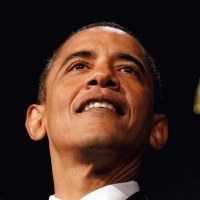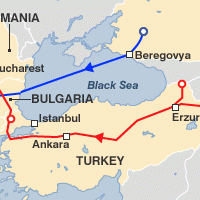![]()
Mon, May 30, 2011 | Turkey Analyst, vol. 4 no. 11 | By Richard Weitz
Whither Turkey-U.S. Arms Sales?
This article was first published in the Turkey Analyst (www.turkeyanalyst.org), a biweekly publication of the Central Asia-Caucasus Institute & Silk Road Studies Program Joint Center. © Central Asia-Caucasus Institute & Silk Road Studies Program Joint Center, 2011.
Turkey’s recent decision to spend billions of dollars buying U.S.-made helicopters underscores the continuing significance of Turkish-American defense industrial ties. Sikorsky Aircraft beat out rival European firms to persuade the Defense Industry Executive Committee, Turkey’s highest decision-making body on defense procurement, to select the U.S.-based company as its supplier of next-generation utility helicopters. Defense experts predict that Turkey might buy as many as 600 of the Turkish version of the S-70 Black Hawk International offered by Sikorsky at a cost of more than $20 billion. Turkish Aerospace Industries and other Turkish firms will co-produce the helicopter.
Background
Despite Turkish efforts to become more independent in arms procurement and less dependent on the United States, Turkey seems destined to remain a major purchaser of U.S. defense products for at least the next few years. Turkey has become more self-reliant for weapons procurement as well as more willing to look to other partners besides the United States, but Turkey will likely have a relatively strong arms trading relationship with U.S. defense firms for years to come because of its reliance on U.S. high technologies and the need to modernize its legacy U.S. systems.
Historically, Turkey and the United States enjoyed a stable and strong arms trade relationship during the Cold War. However, since the 1974 invasion of Cyprus, Turkey has become more willing to rely on other sources for procuring its weapons and military equipment. During the 1990s Turkey turned to U.S. allies, such as Israel, for its arms imports. Strained relations with the European Union and Israel have since led Turkey to acquire more arms from Russia, China, and East Asian suppliers as well as from Turkey’s own defense companies.
Many factors have accounted for this turn away from U.S. arms sellers, including changes in Turkish public opinion; the desire to cultivate better relationships with key energy suppliers such as Russia and Iran; Turkish dislike of U.S. re-export regulations that stringently restrict further transferring these weapons after purchase; tensions with the United States and NATO over other issues; and Turkish perceptions that U.S. firms cannot meet Turks’ sometimes unrealistically high expectations.
With regard to the latter consideration, the U.S. government still refuses to sell weapons to Turkey that Ankara is interested in buying. In these cases, U.S. officials conclude that regional or commercial security considerations override the economic and alliance benefits that might ensue from accepting the offer. Alternately, the U.S. Congress can make clear its opposition to the proposed sale. For example, in January 2011, the United States rejected a Turkish request for combat unmanned aerial vehicles and advanced munitions due partly to congressional irritation at Turkey’s close ties with Iran and frayed ties with Israel.
Notwithstanding these developments, the United States is still Turkey’s most important arms supplier. Turkey continues to rely heavily on U.S. military equipment and technologies. In addition, more Turkish defense exports go to the United States than to Europe, the Middle East, or anywhere else. As of 2010, U.S. entities are still involved in approximately 80 percent of Turkey’s defense-industrial activities.
Implications
Turkey has sustained its comprehensive military modernization program despite national economic problems. The country’s annual defense procurement budget is around $4 billion. Turkey’s efforts to modernize its military continue to lead to major purchases of U.S. military equipment and technologies since the U.S. defense industrial establishment is compatible with Turkey’s existing systems and is often superior to any competitor. Furthermore, although Turkey’s domestic arms industry is becoming more sophisticated, there are many items that it cannot make, at least as well as its foreign competitors. Even if Turkish firms can produce a needed weapons system or component, the Turkish armed forces will still often lobby for the purchase of a foreign-made item if it is of superior quality. For this reason, Turkey remains a major arms importer, ranking as the world’s 10th largest in 2009.
Some of the misperceptions regarding the Turkish-US arms trade results from the relationship’s having two separate dimensions. The United States has always been the largest government-to-government supplier of Turkey’s weapons systems, while U.S. companies have been less successful at securing commercial arms sales.
Aircraft sales constitute a large proportion of the U.S.-Turkey government-to-government deals. The Turkish Air Force has long bought and flown U.S.-made fighter aircraft. The current fleet includes 200 F-16 variants, many of which were co-produced in Turkey. It would be expensive and logistically complex for the Turkish Air Force to adopt another country’s aircraft, which would also require training Turkish pilots to use the new plane. For example, Turkey plans to buy many expensive U.S. fighter aircraft during the next decade, including 30 new F-16s and perhaps more than one hundred very sophisticated and very expensive F-35 Joint Strike Fighters (JSF). Turkey is one of eight countries partnering with the United States on the JSF program. Turkey also buys U.S. engines, avionics, and associated weapons systems with the planes. In addition, Turkey often hires U.S. firms to maintain and upgrade these planes.
The second process is the commercial sales in which U.S. and foreign firms compete to sell a particular item to Turkey. Here is where U.S. sales have fallen sharply in the past decade. U.S. firms have stopped even bidding on many Turkish tenders because they claim that the terms Turkey is offering are incompatible with U.S. military export rules. They also consider Turkey a demanding and unpredictable customer due to Ankara’s policies of frequently canceling tenders or substantially changing its terms.
Conclusions
Four future developments could have a major impact on U.S.-Turkish arms trade ties as well as other elements of the bilateral security relationship. Two developments are near-term issues, while two others concern longer-term trends.
First, the recent political upheavals sweeping through the greater Middle East have led U.S. State and Defense Department officials to review U.S. defense trade relationships with these countries. Although Turkey has thus far been spared such internal chaos, the Obama administration is assessing its overall sales to Turkey’s neighborhood as well as on a country-by-country basis. Arms sales to Turkey could inadvertently be impeded by any general defense restrictions Washington applies to the region.
Second, Turkey’s upcoming decision on whether to place a U.S. missile defense system in its borders could influence the extent of defense cooperation U.S. officials and Congress would favor. The Turkish government, while eager to affirm its solidarity with NATO, does not want to antagonize Iran by taking actions that would contravene Turkey’s stated position that it accepts Iranian leaders’ word that they are not seeking nuclear weapons. More generally, Turkey wants its arms purchases and other defense and foreign policies to deter potential threats like Iran but, in line with Ankara’s goal of “zero problems” with its neighbors, not overreach and provoke them. Yet, the Obama administration, many of whose members believe that Iran is at least pursuing a capacity to manufacture nuclear weapons, considers responding to the emerging threat from Iran to Europe, as well as the war in Afghanistan, as its two most important national security priorities. If Turkey declines to host the radar, the United States might need to place the station in Georgia, which could undermine its efforts to assuage Russian concerns about the system.
From a longer-term perspective, the Obama administration is seeking to simplify and relax U.S. high-technology export controls. The intent is to move in two directions designed to enhance the U.S. industrial base while protecting unique U.S. advantages. The problem is that the current approach toward defense exports harms U.S. sellers while not greatly impeding malicious states from acquiring sensitive technologies. The administration wants to guard state-of-the-art as opposed to state-of-the-world technologies. The reforms aims to construct higher fences around most sensitive technologies, but allow more easy export of items outside the fences. In making export control decisions, the administration will consider whether commercial articles are the product of unique capabilities that cannot be obtained in other ways, the actual risk of U.S. exported equipment being someday used against the United States or its allies, the greater control the United States gains from selling the technology itself, how improving allies’ capabilities helps them contribute to coalition operations, and the damage to U.S. industrial base if sub-tier suppliers go out of business by not being able to export their products. These changes, if effectively enacted, should make it easier for U.S. firms to sell their products to Turkey.
Conversely, the success of the Turkish government’s plans to raise the share of the military’s annual procurement spending going to Turkish defense companies from around 25 percent in 2009 to 75 percent by 2015 would lead to a major decrease in Turkish arms imports in general and purchases from the United States in particular. The Turkish government is working with Turkish corporations to displace defense imports in any areas, including main battle tanks, corvettes and light frigates, reconnaissance and combat unmanned aerial vehicles; reconnaissance satellites; and full-scale training simulators for many air, land, and sea platforms. The ability of Turkey’s indigenous defense industry to achieve such a rapid increase is suspect.
A major indicator as to the possible success of such a strategy is whether Turkey’s military-industrial complex is capable of meeting government hopes to develop and manufacture a modern fighter aircraft with stealth features and state-of-the-art avionics in the next 10-15 years. Turkish officials have indicated that a major reason behind this goal is to reduce their excessive dependence on U.S. sources for their fighter planes. Although they would prefer to rely on exclusive Turkish resources to develop a national fighter, they have indicated a willingness to collaborate with non-American partners, including non-traditional partners from Asia or the Middle East. Success in this regard would undercut what has traditionally been the most lucrative type of U.S. arms sales to Turkey.
About the author,
Richard Weitz, Ph.D., is Senior Fellow and Director of the Center for Political-Military Analysis at the Hudson Institute.



 RSS
RSS














Whither Turkey-U.S. Arms Sales? | #Turkey #tcot #twcot #p2 #jcot #Israel #EU #NATO http://j.mp/jGLtZz
Whither Turkey-U.S. Arms Sales? | #Turkey #tcot #twcot #p2 #jcot #Israel #EU #NATO http://j.mp/jGLtZz
Whither Turkey-U.S. Arms Sales? | Middle East news, articles …: From a longer-term perspective, the O… http://bit.ly/izYO7U #asematy
Whither Turkey-U.S. Arms Sales? | #Turkey #tcot #twcot #p2 #jcot #Israel #EU #NATO http://j.mp/jGLtZz